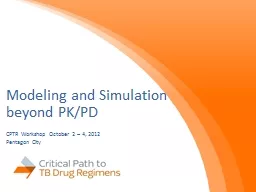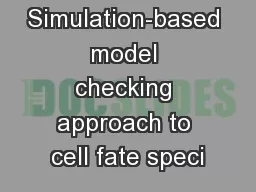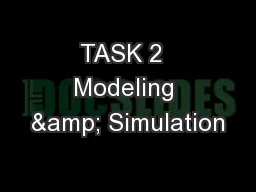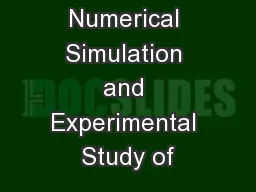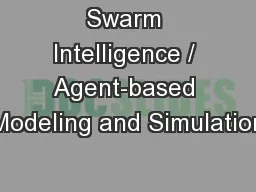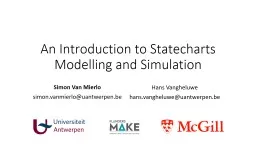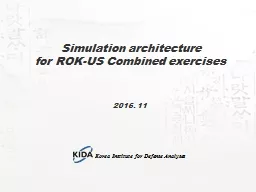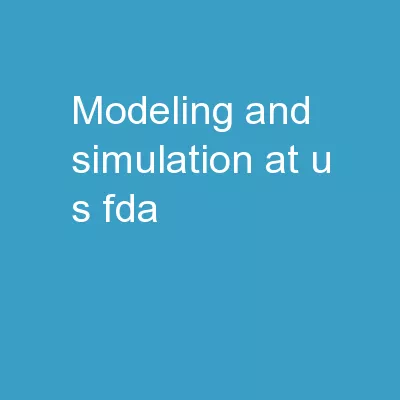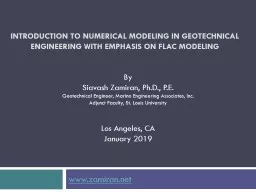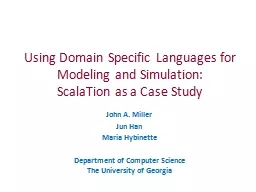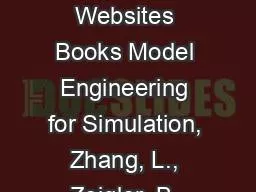PPT-Modeling and Simulation
Author : lois-ondreau | Published Date : 2016-05-29
beyond PKPD CPTR Workshop October 2 4 2012 Pentagon City MampSWG Objective For Preclinical Phases Deliver Quantitative PKPD models to help sponsors select therapeutic
Presentation Embed Code
Download Presentation
Download Presentation The PPT/PDF document "Modeling and Simulation" is the property of its rightful owner. Permission is granted to download and print the materials on this website for personal, non-commercial use only, and to display it on your personal computer provided you do not modify the materials and that you retain all copyright notices contained in the materials. By downloading content from our website, you accept the terms of this agreement.
Modeling and Simulation: Transcript
Download Rules Of Document
"Modeling and Simulation"The content belongs to its owner. You may download and print it for personal use, without modification, and keep all copyright notices. By downloading, you agree to these terms.
Related Documents

